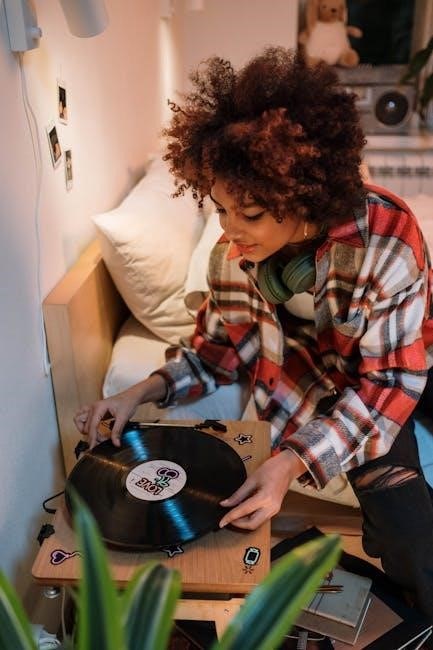Vinyl Shirt Placement Guide: A Comprehensive Plan
Crafting personalized shirts with vinyl is rewarding. This guide ensures impeccable design placement. From centering to specific scenarios like V-necks, we cover it all. We aim to empower your creative projects with precision and confidence.
Creating custom shirts with heat transfer vinyl (HTV) allows for incredible personalization. However, achieving a professional look hinges on accurate vinyl placement. A misplaced design can ruin the entire project, making it unwearable or unattractive. This guide is designed to equip you with the knowledge and techniques needed for perfect placement every time.
We’ll explore essential tools like T-shirt ruler guides and heat presses, along with general guidelines for centering designs and considering size. We’ll also delve into specific scenarios such as front center, left chest, and back placements. Special attention will be given to V-neck shirts and how to adjust for their unique neckline. Finally, we’ll address common troubleshooting issues and guide you in creating a printable placement guide for repeated success.
Whether you’re a seasoned crafter or a beginner, mastering vinyl placement will elevate your shirt designs to the next level.
Essential Tools for Vinyl Placement
Precision is key! T-shirt ruler guides are invaluable for consistent design positioning. A reliable heat press ensures proper adhesion. These tools minimize errors, leading to professional-looking, personalized shirts every time.
T-Shirt Ruler Guides
T-shirt ruler guides are indispensable tools for achieving consistent and accurate vinyl placement on shirts. These guides, often made from cardstock, plastic, or acrylic, provide a visual reference for centering and aligning designs, ensuring a professional finish every time.
Using a t-shirt ruler guide simplifies the process of positioning heat transfer vinyl (HTV) or sublimation prints. By aligning the guide with the neckline and center of the shirt, you can easily determine the optimal placement for your design. This eliminates guesswork and reduces the risk of off-center or crooked designs.
Different types of ruler guides cater to various design placements, including front center, left chest, and back designs. Some guides even offer specific measurements for different shirt sizes, ensuring that your design is appropriately scaled for the garment. Printable ruler guides are readily available, providing a cost-effective and customizable solution for your vinyl crafting needs.
Heat Press and Accessories
A heat press is essential for adhering vinyl designs to shirts, providing consistent heat and pressure for a durable bond; Choose a heat press with adjustable temperature and timer settings to accommodate different types of vinyl and fabrics. A clamshell or swing-away design offers ease of use and safety.
Accessories enhance the heat-pressing process. Teflon sheets protect the design and heat press platen from sticking. Heat-resistant tape secures the vinyl in place during pressing. Weeding tools aid in removing excess vinyl from the design. Heat pillows help distribute pressure evenly, especially over seams and zippers.
Proper maintenance ensures longevity. Clean the heat press platen regularly to remove residue. Check the pressure settings periodically to maintain consistent results. Store accessories in a clean, dry place to prevent damage. Investing in quality heat press and accessories is paramount for professional-looking vinyl shirt creations.

General Placement Guidelines
Achieving professional results requires adherence to general guidelines. Centering and size considerations are paramount. Consistent measurements and attention to detail are crucial. These foundational principles ensure visually appealing and balanced designs on any shirt.
Centering Designs
Centering designs accurately is fundamental for aesthetically pleasing vinyl applications. Begin by folding the shirt lengthwise, creating a temporary crease to mark the center. Ironing the folded part enhances visibility and provides a reliable guide.
For front and center decals, align the design along this central crease. Ensure equal distances from the neckline on both sides. For back designs, measure down from the collar’s center, typically around 3 inches, and center the design accordingly.
Using a T-shirt ruler guide can further aid in precise centering. These tools often feature markings to ensure symmetrical placement. Remember to double-check measurements before heat pressing to avoid misalignment. This meticulous approach guarantees a professional finish, enhancing the overall appeal of your custom apparel.
For center-chest designs, imagine a vertical line just off the collar’s side and a horizontal line from the armpit seam. The intersection guides ideal placement, ensuring balanced and visually harmonious results.
Design Size Considerations
Selecting the appropriate design size is crucial for achieving a balanced and visually appealing result on your vinyl shirts. A design too large can overwhelm the shirt, while one too small may appear insignificant. Consider the shirt size when determining the design dimensions.
For adult shirts, a common front design size ranges from 10×10 inches for small to extra-large sizes. Adjust proportionally for larger sizes like 3XL and 4XL. Left chest designs typically measure around 3-4 inches wide.
Back designs often use a 10×10 inch size for small to extra-large adult shirts. For children’s shirts, scale down the design accordingly. Use a T-shirt size chart to guide your decisions.
The design’s complexity also influences size. Intricate designs might require larger dimensions to maintain clarity. Always test the size on a mockup before applying the vinyl to the shirt. Proper sizing ensures your design complements the garment, creating a professional and aesthetically pleasing outcome.
Specific Placement Scenarios
Different shirt styles and design types necessitate specific placement strategies. We’ll explore front center, left chest, and back placements. Understanding these scenarios ensures professional, visually appealing results for every vinyl project.
Front Center Placement
Front center placement is a classic choice for T-shirt designs, offering maximum visibility. The key to a successful front center design lies in precise centering and optimal height. To begin, fold the T-shirt lengthwise and iron the crease to create a visual guide. For regular shirts, a general rule is to position the design approximately 3 inches below the neckline. This measurement may need slight adjustments based on the design’s size and the shirt’s overall style.
For larger sizes like 3XL and 4XL, increase the distance from the neckline to 3-4 inches. Ensure the design is centered horizontally, using the ironed crease as a reference point. A T-shirt ruler guide can be invaluable for achieving accurate and repeatable placement.
Avoid placing the design too low, as it may end up in an awkward position on the stomach. Experimentation and careful measurement are crucial for achieving a balanced and visually appealing front center design.
Left Chest Placement
Left chest placement offers a subtle yet professional look, ideal for logos and smaller designs. Locating the correct position is key. Imagine two lines: one vertical, starting just off the collar’s side, and another horizontal, originating at the armpit seam. The design’s center should be near the intersection of these lines.
For standard shirts, placing the design about 3 inches down from the collar and centering it on the left chest area is a good starting point. Use a T-shirt ruler guide for precision. The size of the design should be proportionate to the shirt size.
For V-neck shirts, adjust the vertical placement slightly. Consider the V-neck’s depth and ensure the design sits comfortably above the neckline. A balanced and well-placed left chest design enhances the shirt’s overall appeal. Avoid placing the design too close to the armpit or too far towards the center.
Back Placement
Back placement is perfect for larger designs, slogans, or team names. Begin by finding the center point. Fold the shirt lengthwise and iron the fold to create a guiding crease. Measure down from the center of the collar. For adult sizes (S-XL), a common starting point is about 3 inches below the collar.
Design size matters. For adult sizes, a 10×10 inch design often works well, but adjust based on shirt size. For larger sizes like 3XL and 4XL, increase the distance from the collar slightly, perhaps to 3.5 or 4 inches. Use a heat press to apply the vinyl, ensuring even pressure and temperature.
Consider the design’s content. If it’s a name or slogan, ensure it’s legible from a distance. Double-check alignment before pressing to avoid crooked designs. Back placement provides ample space for creativity, so experiment with different sizes and styles.

Placement on V-Neck Shirts
V-neck shirts require special attention. Design placement should be lower than on standard shirts. Aim for about 1.5 inches below the V-neck’s opening. Centering is crucial to avoid an awkward, off-balanced appearance.
Adjusting for V-Neck Depth
V-neck depth significantly influences design placement. A deeper V-neck necessitates a lower design placement. Start by measuring the depth of the V. Then, calculate the design’s vertical center point. This ensures the design sits comfortably without being too close to the neckline or too low on the chest.
For shallower V-necks, a higher placement, around 1.5 inches from the opening, often works well; Deeper V-necks might require dropping the design to 2 or even 2.5 inches. Always consider the design’s shape and size. A wider design might need a slightly higher placement to avoid looking cramped.
Test placements with paper mock-ups are invaluable. Secure the paper to the shirt with tape. View it in a mirror. Make adjustments before committing to heat-transfer vinyl. This step prevents costly mistakes and ensures a professional finish.

Troubleshooting Common Placement Issues
Even with careful planning, placement errors can occur. A common issue is designs appearing crooked. Always double-check alignment using a ruler or T-square before heat pressing. Misaligned designs often stem from inaccurate initial measurements or a shifting shirt during the application process.
Another frequent problem is designs positioned too high or low. This often results from neglecting to account for the shirt size and body type. Always test the placement on a similar-sized shirt. A design that looks centered on a small shirt might appear too low on a larger size.
Bubbles or wrinkles under the vinyl can also ruin a design. Ensure the fabric is smooth and free of wrinkles before applying heat. Proper heat press settings and consistent pressure are crucial. If bubbles appear, carefully reheat the area and use a squeegee to smooth them out.

Creating a Printable Placement Guide
A printable placement guide is invaluable for consistent results. Start by measuring common placement points on various shirt sizes. Document the neckline distance, center chest height, and left chest width for each size. Create a simple chart with these measurements.
Use a design program to create visual templates. Overlay these templates onto shirt outlines, indicating the ideal placement zone for different design types. Include guidelines for both front and back designs. Consider adding a section for V-neck adjustments.
Print the guide on durable paper or laminate it for repeated use. Punch holes along the edge to hang it in your workspace. This handy reference ensures accurate and professional vinyl placement every time, saving time and reducing errors. Regularly update the guide with new shirt styles and design preferences.
